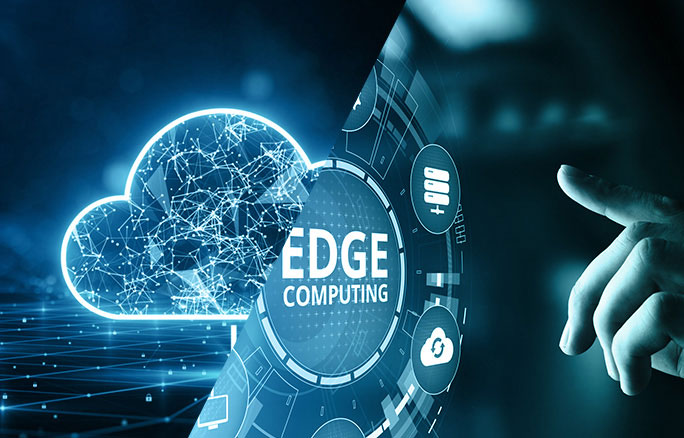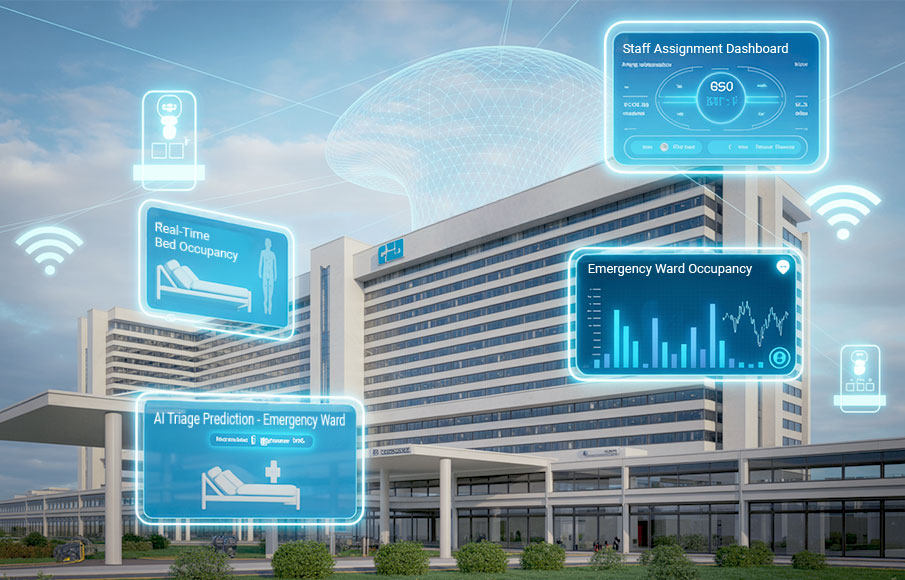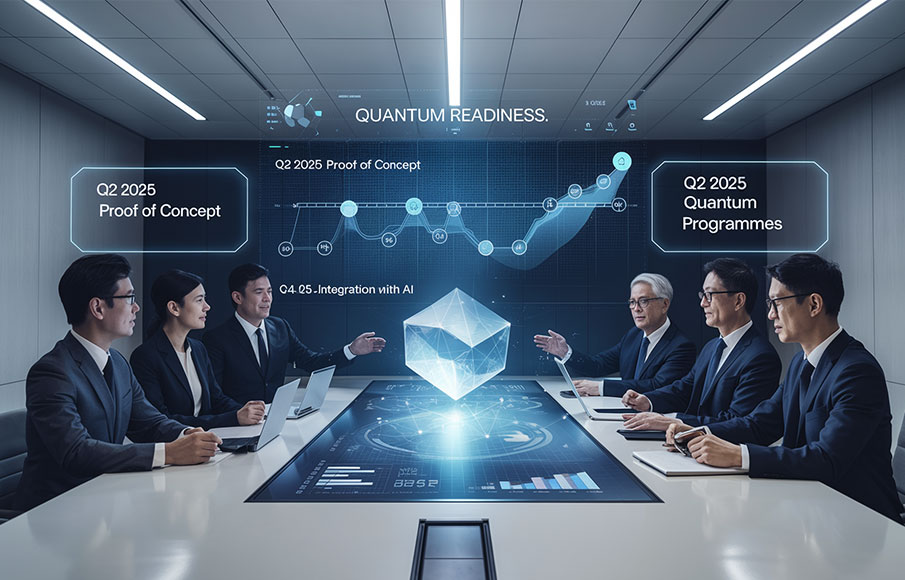Cloud Computing vs. Edge Computing: Pros, Cons, and Applications
- 13 October 2022

Most organisations would be familiar with Cloud Computing. However, not many can say the same for Edge Computing as it is a relatively newer concept. We explore these two options and evaluate their pros and cons to enable companies to choose one over the other, or even both, for their digitalisation strategy needs.
What is Cloud Computing?

Cloud computing is the delivery of on-demand computing services over the Internet on a pay-as-you-go basis. Rather than keeping files and information on a local storage device, cloud computing makes it possible to save them over the Internet.
Customization is one of its most essential features of cloud computing, and its services differ according to the company or user. Cloud computing can be categorized into several service models:
- Infrastructure as a Service (IaaS): Custom built for small-scale cloud service requirements, either for individuals or groups of people. It provides a virtual machine-like cloud hosting environment.
- Platform as a Service (PaaS): Suited for companies or work groups that require large-scale cloud services for massive data processing or software/application management.
- Software as a Service (SaaS): Provides individuals with a more personalized and easier-to-manage cloud service.
- Bare Metal as a Service (BMaaS): A physical server that is hosted in the cloud but can only be assigned to just one customer at a time. It does not host multiple tenants like IaaS and is dedicated for usage by the user’s applications to maximize performance.
The deployment of cloud services is also classified as follows:
- Public Cloud: Cloud services made available to multiple users on a shared infrastructure. It is a pay-as-you-use service that makes it easy to scale on demand.
- Private Cloud: Dedicated services made available for individuals and companies without sharing with a third party. A single organization exclusively operates the cloud infrastructure.
- Hybrid Cloud: Incorporates both public and private cloud services for users.
- Multi Cloud: Adoption of one or more public clouds and different service providers for specific workloads and compliance.
Advantages Of Cloud Computing

Different models of cloud computing come with various advantages and applications. Generally, cloud computing comes with the following benefits:
- Customized pay-as-you-go (PAYG) packages: Using more services means higher fees, and using fewer services means lower payments.
- Quick deployment: Utilising the cloud, you can rapidly install your service with fewer clicks and obtain your system’s resources faster.
- Recovery: For all types of emergencies, including natural disasters and power outages, cloud-based services offer speedy data recovery.
- Network reliability: The cloud incorporates fault tolerance. This means that when a malfunction occurs, the system can still continue to operate.
Emerging Cloud Trends
At present, the number of businesses that have adopted cloud computing are steadily rising. Gartner estimates that by 2025, 75% of enterprise-generated data will be processed at the edge. Especially with COVID-19 and the rise of remote working, there is now a strong demand for cloud solutions.
However, cloud computing does have certain technological drawbacks such as higher latency, especially for public cloud. Due to this limitation, new cloud trends such as edge computing now coexists with the cloud and help to close the gap when it comes to the constraints of cloud computing.
The potential of edge computing systems is great; they can be applied in mobile apps, augmented reality, video monitoring, industrial automation, and more. Together with cloud computing infrastructure, they can cater for instances where real-time performance is required.
What is Edge Computing?

Edge computing is a distributed information technology (IT) architecture where the client data is handled at the network’s edge, closer to the source. Businesses today are drowning in data, and edge computing can help to gather massive amounts of data from sensors and IoT devices from remote locations and hostile operating environments almost anywhere in the globe.
The Importance of Edge Computing
The introduction of the content delivery network (CDN) in the 1990s marked the beginning of edge computing.
Edge computing remains a relatively new concept for cloud, with one of the most relevant applications being in the realm of video analytics.
For many businesses, this technology is worth looking into because it minimizes the need for lengthy linkages between cloud facilities. This reduces the overall network burden while simultaneously reducing application delay.
Edge computing is particularly crucial for applications that require real-time performance, where it can help several programs (web browsers, video, and speech recognition) enhance responsiveness while lightening the burden on computing infrastructure. Many businesses also invest in it because of the increasing interest in connected gadgets like autonomous vehicles and manufacturing robots.
On top of that, by addressing latency, bandwidth, and data sovereignty compliance problems altogether, edge computing is a great choice to complement cloud computing strategies.
Advantages of Edge Computing for Businesses
Edge computing has many advantages, including the following:
- Improved responsiveness: Edge technology makes it faster for devices to communicate with servers. This is because the Edge compute resource is typically located closer to the source of data.
- Scalability: Edge computing can be scaled and customized for various business needs with increased resources assigned virtually without having to undergo a lengthy upgrading or tech refresh process that is typical of onsite servers.
- Distribution: Edge computing allows an organisation with multiple sites to tap on to the nearest compute resource without having all their data analysed at a single centralized hub. This helps to minimise the impact of data loss due to network congestion and latency.
- Cost-effectiveness: Edge computing is relatively more cost effective than owning and managing on-premise servers. In scenarios where organisations have multi-site requirements, a few outlets can tap on to the same computing resource, which is more affordable than setting up and maintaining on-site servers at each location.
- Data sovereignty: Knowing exactly where your data is computed gives organisations the assurance that they are in compliance with data sovereignty requirements.
Applications of Edge Computing for Businesses

- Video Analytics: End users can make quicker decisions in urgent situations because edge computing lowers bandwidth consumption and connection latency.
- Smart devices and machines: Edge computing when coupled with 5G can improve the operation of smart vehicles that utilise Artificial Intelligence to make real-time decisions. Autonomous vehicles, for instance, can link to edge systems to increase safety, lower accident rates, and calculate optimum routes to reduce travel time.
- Industry manufacturing and production: Operational Technology such as building management systems, safety automation systems, distributed control systems, lighting/energy control systems, and SCADA systems can tap on to Edge computing to support real-time decision-making with up to date information and analytics.
Edge Computing or Cloud Computing: Which to Go For?
Edge computing and cloud computing have different applications, and their usefulness differs for each business. Here are some considerations to take note of when considering which to deploy:
| Points of Difference | Edge Computing | Cloud Computing |
| Locations | Near the data source to function at high performance without local human resources required. Solution is monitored and controlled remotely. | Not located near the data source. Offers mobility, ensuring access to resources in the cloud in real-time from any location or device. |
| Application Types | Critical functions that require real-time decision-making and ultra-low latency performance:
|
Scalable storage and compute resource: For large amounts of data that are not reliant on real-time decision-making.
Backup and Recovery: Easily recover data with minimal damage in case of a disaster. Big Data Analysis: With unlimited storage capacity of the cloud, businesses can store and analyze big data to gain valuable business insights. Testing and Development: With cloud computing, businesses get scalable and flexible cloud services, which they can use for product development, testing, and deployment. |
Conclusion

Ultimately, businesses should consider their usage and needs when planning for a cloud strategy. An even better solution is to complement edge with cloud systems, and make the process of distributing compute, storage, and networking resources faster and more efficient.
With SPTel’s edge cloud computing, and SPTel’s Cloud Connect services, you can achieve the best of both worlds with edge and cloud computing.
Businesses from small and medium scale enterprises to large enterprises can now enjoy improved application performance, data sovereignty, and reduced network congestion.
As an added advantage, SPTel also offers seamless integration with our IoT-a-a-S platform, helping businesses jumpstart their IoT deployment with an end-to-end solution that includes gateway, device management, edge compute resource and network backhaul.
To learn more about SPTel’s services, contact us today!












